The Brief
We were called to a property in Kings Langley, Hertfordshire, following an escape of water after the water tank – located in the loft – burst. Both the ground floor and first floor were badly affected, with the majority of the damage isolated to the rear of the property. Sample points in this area read 100% WME, meaning that the materials are completely saturated.
Built circa the 1960s, the property is a detached house with brick to the outer walls, while the interior walls are built from brick and block. The roof is a pitched timber frame construct with tiles. The ceilings consist of 22mm plasterboard, finished with wallpaper and/or paint, depending on the room.
The ground floor flooring consists of sand cement screed, bitumen adhesive, and thermal plastic tiles finished off with various floor coverings, while the first floor is built on timber joists with floorboards and finished in various floor coverings.
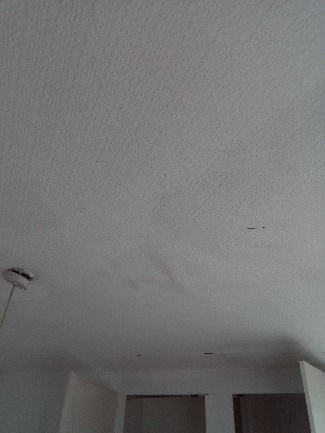
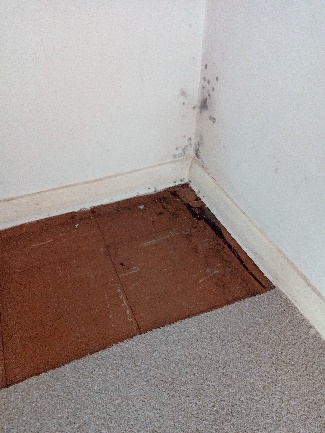
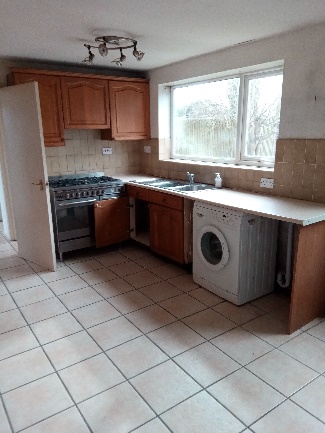
The Objective – Flood Restoration
When we attended the property in Hertfordshire, we recorded the atmospheric conditions which read as follows:
| Relative Humidity | Temperature | Dewpoint | Specific Humidity | Vapour Pressure |
|---|---|---|---|---|
| 64.1% | 12.9℃ | 6.3oC | 5.98g/kg | 0.96kPA |
There are several reasons why we measure the atmospheric conditions; one being that it allows us to evaluate whether there is a risk of secondary damage to hygroscopic materials (such as wood and plasterboard) due to high moisture levels. Hygroscopic materials can absorb water vapour from the air, increasing the amount of water that they’re holding at any one time. Not only can this swell materials such as wood, but it can also lead to microbial (most commonly mould) growth.
Speak to our restoration experts now
01622 926 505The diagrams below show the sample point locations where we took readings to determine how saturated the materials are. Readings in the most affected areas read 999 REL and 100% WME. Wood Moisture Equivalent (WME) is the theoretical %mc (moisture content) value that would be attained by a piece of wood in contact with and in moisture equilibrium with the material under test. The higher the reading, the damper the material is, with 100% WME being the maximum value. As a general rule of thumb, a WME reading should be less than 17.5% WME.
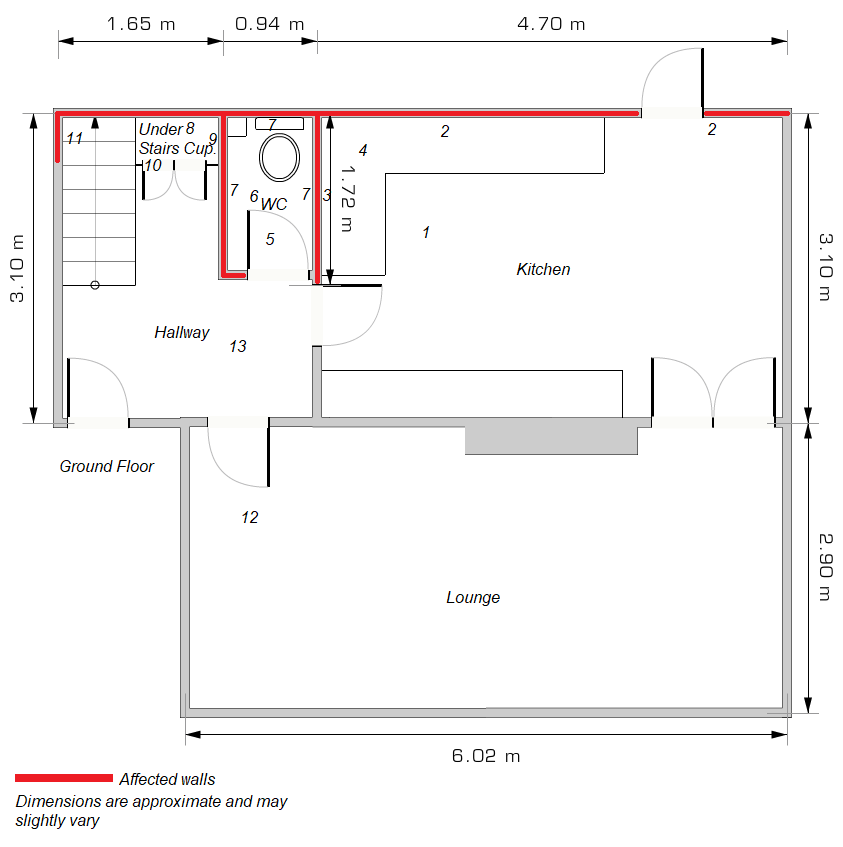
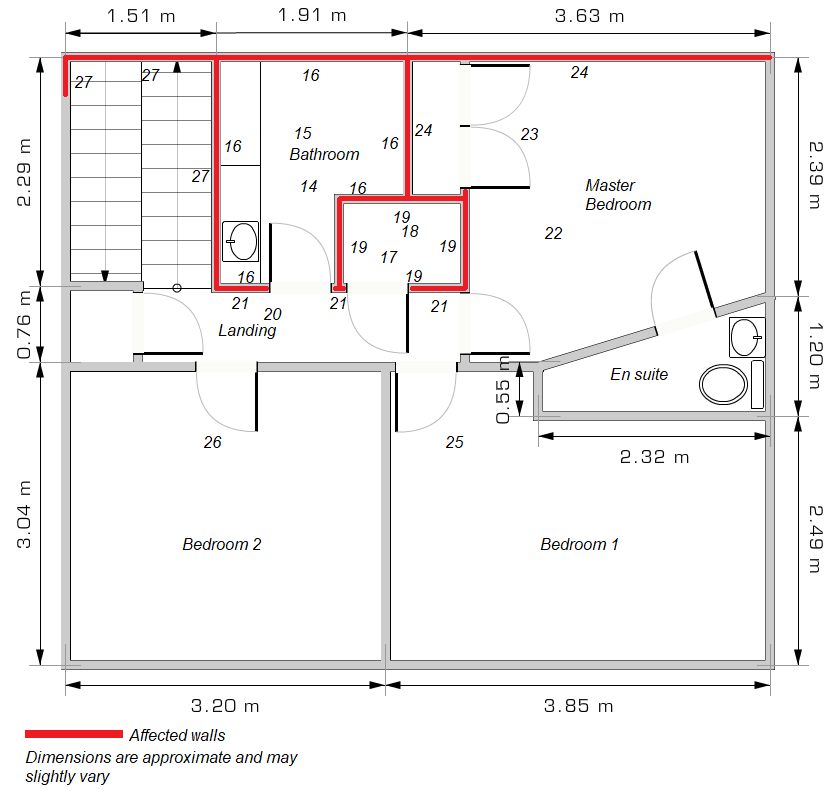
Due to the construction of the external walls, we suspected moisture to be trapped within the wall cavities. To confirm, a more intrusive inspection would be needed. We can measure the moisture levels within the wall cavities by drilling 16mm holes and inserting in-depth relative relative humidity probes.
The Technical Part – Flood Restoration
In order to complete the required flood damage clean up, it was necessary to remove flooring from all affected rooms and strip the walls back to brick/block work. This included the removal of tiles and wallpaper as appropriate. Wallpaper, ceramic tiles, and oil-based paint finishes act as vapour barriers. Vapour barriers prevent and inhibit the evaporation of moisture, trapping it underneath. The kitchen cupboards and sanitary units in the bathroom also needed removing.
After a flood such as the one in Kings Langley, moisture is often trapped underneath the floor. While we were able to lift the carpets and underlay in the affected rooms, we were unable to lift the floor tiles in the downstairs hallway and kitchen. Despite our recommendations, the client wanted them left in-situ. We warned that by doing so, there is a risk that the lower walls could suffer from further wetting in the future, as a result of the moisture seeping up the walls from the damp floor (in the form of moisture migration).
In some of the affected areas, it was necessary to remove plasterboard and plywood from the ceiling, as well as chipboard and thermal insulation from the loft space. The removal of plasterboard and plywood allows us to address any potential pockets of saturation and contaminated absorbent materials. Plasterboard is naturally comprised of organic materials which provide a sustainable food source for mould, which can start colonising in a matter of hours following a flood. By removing the plasterboard, we are able to address any mould and its cause, which reduces the likelihood of further growth in the future.
The strip out work was estimated to take three technicians three days, while the flood damage drying was estimated to take four weeks to adequately dry the building. This process used a range of flood drying equipment, including piping kits, turbines for air circulation, three condensing dehumidifiers, and two adsorption dehumidifiers.
Speak to our restoration experts now
01622 926 505


